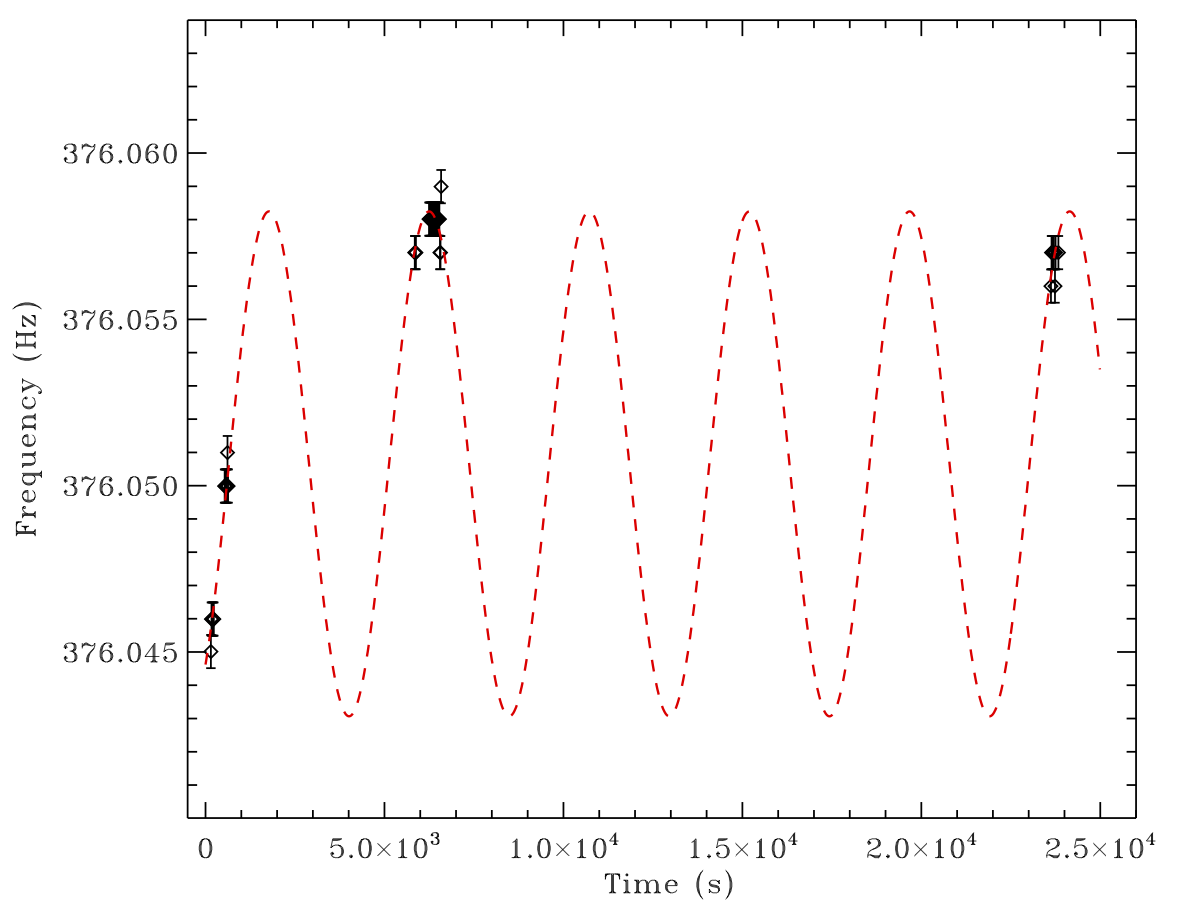NICER / ISS Science Nugget
for October 29, 2020
NICER discovers a new millisecond pulsar in an ultracompact orbit
Ultracompact X-ray binaries (UCXBs) are systems in which a compact object - a black hole or neutron star - is accreting from a 'degenerate' companion star in an extremely tight orbit. Too small to accommodate a normal, Sun-like star with a hydrogen envelope, such orbits are so tight that the binary components take less than 80 minutes to complete one orbit.
IGR J17494-3030 is a suspected X-ray binary that was discovered during a brief outburst in 2012 but has been quiescent since. It was observed by NICER on 27 October 2020 in response to a report of renewed activity in high-energy X-rays from ESA's INTEGRAL mission. The NICER team quickly detected X-ray pulsations from IGR J17494 at a frequency of 376 Hz. Preliminary timing analysis of these pulsations in data collected thus far indicates that a neutron star spinning once around every 2.66 milliseconds is in a circular orbit with a low-mass (somewhat more than 1.5% the mass of our Sun) companion star, with a period of 4509 s (75 minutes; see figure). These features identify IGR J17494 as a UCXB hosting an accreting millisecond X-ray pulsar.
This work, led by MIT graduate student M. Ng, has been reported in Astronomer's Telegram #14124. The NICER team is continuing to monitor IGR J17494 during the ongoing outburst.

Figure: The millisecond pulsar's X-ray pulsation frequency is modulated (Doppler shifted) by its orbital motion around the binary system's center of mass. The dashed red line represents a model of how the measured pulse frequency changes with time as the pulsar travels in its circular orbits. The NICER data points in black follow this model very well. Over the next few weeks, more samples at different orbital phases will be taken to further confirm this model.
<< Previous
Main Index
Next >>